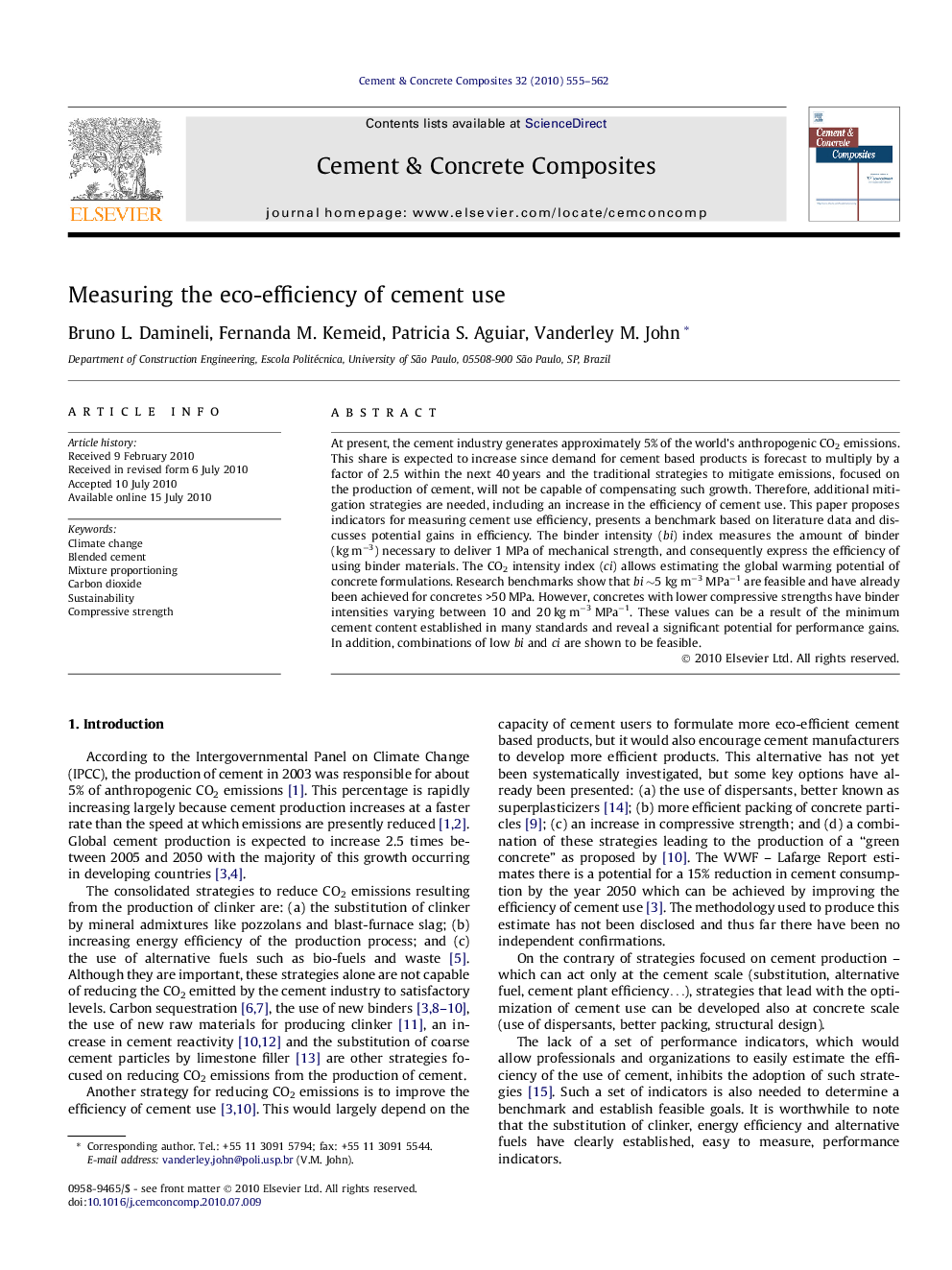| کد مقاله | کد نشریه | سال انتشار | مقاله انگلیسی | نسخه تمام متن |
|---|---|---|---|---|
| 1455331 | 989036 | 2010 | 8 صفحه PDF | دانلود رایگان |

At present, the cement industry generates approximately 5% of the world’s anthropogenic CO2 emissions. This share is expected to increase since demand for cement based products is forecast to multiply by a factor of 2.5 within the next 40 years and the traditional strategies to mitigate emissions, focused on the production of cement, will not be capable of compensating such growth. Therefore, additional mitigation strategies are needed, including an increase in the efficiency of cement use. This paper proposes indicators for measuring cement use efficiency, presents a benchmark based on literature data and discusses potential gains in efficiency. The binder intensity (bi) index measures the amount of binder (kg m−3) necessary to deliver 1 MPa of mechanical strength, and consequently express the efficiency of using binder materials. The CO2 intensity index (ci) allows estimating the global warming potential of concrete formulations. Research benchmarks show that bi ∼5 kg m−3 MPa−1 are feasible and have already been achieved for concretes >50 MPa. However, concretes with lower compressive strengths have binder intensities varying between 10 and 20 kg m−3 MPa−1. These values can be a result of the minimum cement content established in many standards and reveal a significant potential for performance gains. In addition, combinations of low bi and ci are shown to be feasible.
Journal: Cement and Concrete Composites - Volume 32, Issue 8, September 2010, Pages 555–562